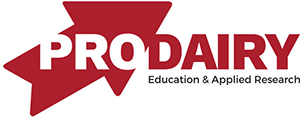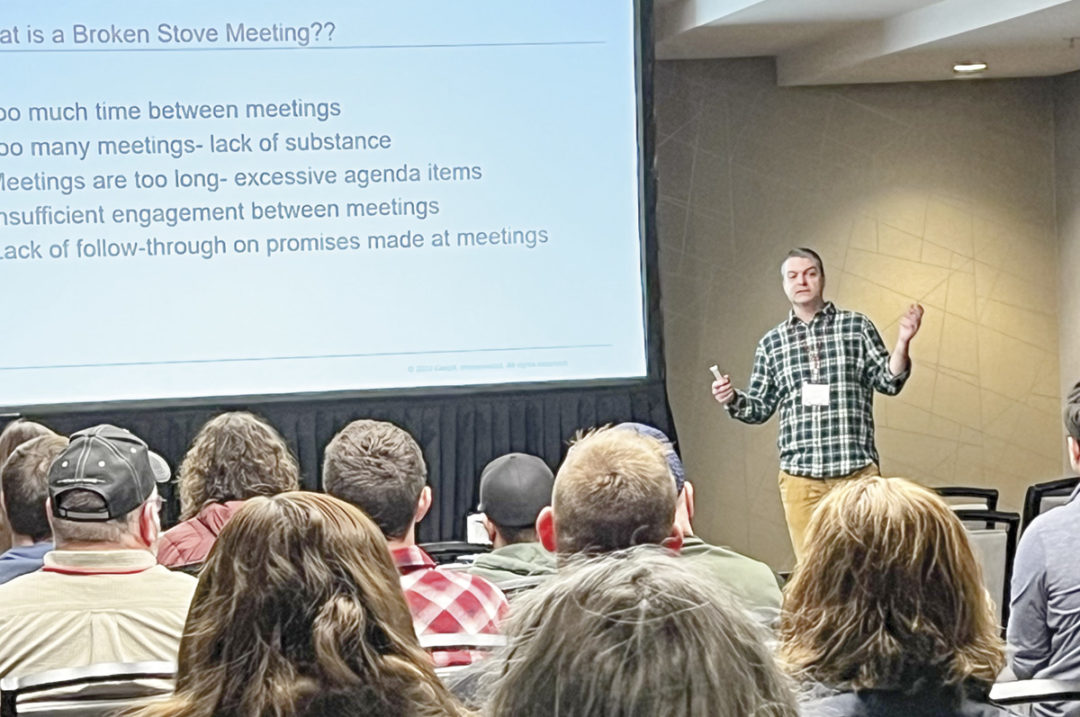One of the biggest differences between farmers who struggle to be progressive and make changes and those who possess the agility to tackle change boils down to structure and clarity. These farms have a framework of systems and a clear chain of command so employees know how to have concerns addressed and how to get things done quickly. These dynamic farms through management structure provide true clarity for employees: clarity of how and why they do their jobs, how their jobs impact the business, and how everyone fits in the structure of the farm.
Key practices that consistently result in lower turnover rates, and higher and more efficient performance, include:
ORGANIZE THE WORK
A farm is not a single, monolithic business, but rather a series of highly interconnected enterprises. Use the biggest whiteboard you can fit on a wall to create a chart of every enterprise or department on the farm and list all the associated jobs. With the dairy divided into departments, assign a supervisor who is responsible for the department, including people and performance. Two things are created: a chain of command and incentive to build training programs, since a manager is now accountable for results.
The chain of command, while changeable, is sacred. Every employee wants one boss. More than one boss creates confusion and distorts clarity. Unless someone is doing something cruel, illegal, or dangerous, all concerns need to be communicated to the supervisor of the department. Likewise, if an employee comes to a manager from a different department with a non-emergency issue, they need to be redirected to their supervisor. This takes discipline and seems cumbersome, but once in place, is efficient and less stressful for everyone.
PROTOCOLS
Most people like the idea of job protocols but no one likes to write them. We usually give up after getting bogged down in details for a document that no one actually reads. It can be a frustrating exercise, until we remember who protocols are for. Protocols are for beginners, and specifically as a standard syllabus, for the person responsible for training a new hire. Protocols should include basic steps that allow a new person to start doing their job. They are the framework around which all further professional development is built through engagement and meetings. Protocols allow everyone to start with the same knowledge.
ENGAGEMENT AND MEETINGS
Managers who are too busy to engage daily with supervisees and attend to their needs because they are unwilling or afraid to delegate responsibilities aren’t managers. Delegating is a struggle for managers because:
- They are unwilling to give up things they like to do (not thinking like a manager)
- They fear they will be perceived as shirking responsibility (lack of structure or understanding roles)
- They are worried that the work won’t be done properly (lack of training and organization)
True managers know they have plenty of opportunity to get dirty, and they understand the power of having meetings and training sessions. Different types of meetings serve different and specific purposes, and all types should be used:
-
AM/PM LAP
Every day, 5 to 10 minutes
It is essential that supervisors check in with their employees every day, morning or afternoon. This can be streamlined if, for example, shift leaders serve as supervisors to a day or night shift. It is best when the check-in is done at the same time every day, as employees will be ready with questions and concerns.
- TIME CLOCK MEETINGS
Once a week, 5 to 10 minutes
These meetings at shift change are a quick opportunity to get everyone together for updates on performance (SCC or mastitis cases, for example), or to explain why one shift may be behind schedule or to quickly address concerns at work or in the house. I’ve found they are a good salve for occasional tension between shifts, and are a good reminder that everyone is working toward the same goals.
-
DEPARTMENT MEETINGS
As needed, though not less than quarterly, 30 minutes or less
The primary aim of department meetings is professional development. Making changes or improving protocol compliance is always easier when employees understand why the steps in their jobs matter and how they impact performance. Keep the agenda to one to three items to maintain focus and information retention. A couple of housekeeping items are fine as long as the meeting ends on a positive note and the session is closed before discussion becomes unproductive.
-
MANAGEMENT TEAM MEETINGS
As needed, though not less than bi-monthly, 30 minutes or less
Taking time to review issues in every department is important to keep the management team on the same page. This provides opportunities for team coaching, as well as to identify needs and priorities that can make decision-making more efficient. Keep the agenda short and review the organizational chart periodically or after staffing changes to ensure that it stays relevant to the farm’s daily operation.
-
MANAGEMENT DEEP DIVE MEETINGS
Two to three times a year, one agenda item
Putting a particular department under the microscope can be humbling, but it can also be exciting and enlightening for the entire team. Attendees should include the management team, key employees in the department, and trusted advisors (vet, nutritionist, or suppliers). The purpose isn’t to humiliate, but rather to focus on opportunities and to emphasize how activities in other departments impact one another. The deep dive is often a dinner meeting.
ONBOARDING AND PERFORMANCE EVALUATION
Two additional areas of tremendous opportunity to provide clarity to employees that are often overlooked by many farmers are onboarding and performance evaluations.
- ONBOARDING
Typically, onboarding a new employee consists of exchanging documents and pointing a new hire toward their area of work. Instead, the process should be an opportunity to establish the farm’s culture and to welcome a new employee into an organization that takes them seriously. Instead of solely being a five-minute paperwork session, time should be taken over the course of a week to give a farm tour, make introductions, provide training, and it should be done by their direct supervisor.
- PERFORMANCE EVALUATION
An annual performance evaluation doesn’t and shouldn’t be a negative experience. Instead, it is an opportunity for managers to listen and understand gaps in expectations and to think about individual training needs, as well as commend a job done well. It’s a chance to learn what career goals an employee might have, as well as when they might leave the farm or return to their home country. If raises are awarded, reviewing an employee’s entire financial package, including the value of housing and utilities, will help them walk out with an abundance of clarity.
FOCUSED EMPLOYEES
The main things that stress us all out in daily life are unanswered questions, lack of simplicity, and lack of confidence that we are doing our jobs satisfactorily. If there is also a language barrier, it becomes easier to understand how providing structure and clarity to an employee thousands of miles from their home results in a more focused and content employee.
 |
This article appeared in PRO-DAIRY's The Manager in July 2023. To learn more about Cornell CALS PRO-DAIRY, visit PRO-DAIRY. |






